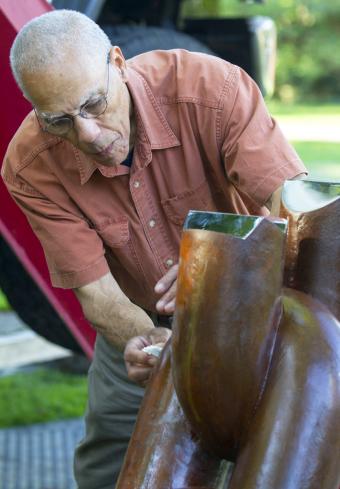This is most moving. Slavery is difficult to talk about.
Those of us who can claim ancestry originating from Africa and the slave trade often have to struggle against a sense of shame from having descended from a people who were believed to deserve the treatment of being considered property to be bought and sold. To be brought to these shores as oxen, to do uncompensated work, and to be treated as property, to be treated as wealth.
Those of us who can claim descent from Europe — or at least as much descent as can be seen, because I think our culture is much more mixed and amalgamated than our politics and social structure tend to acknowledge. I think we are really much more family than people on two sides of a divide. Certainly genetically, we are more family if the truth be told, and I think we are in terms of our shared history.
Be that as it may, we do have a divide. The people who have descended from Europe, I think their struggle is not to feel ashamed of a structure that privileged certain people for so many years at the expense of others.
I feel that President Ruth Simmons deserves enormous respect and our collective thanks for initiating this study about slavery and justice here at Brown. And Brown deserves enormous respect for its courage in publicly acknowledging the University’s connection to this trade.
I was honored to have been chosen to collaborate in bringing this memorial into being. Initially I was honored, and after I took on the project, I realized what a weight it was to try to memorialize something as shameful as the practice of buying and selling human beings, which went on for so long in this country. It became a real chore, and it felt as though it was something that didn’t really allow much for my own usual involvement, engagement with my sense of freedom as an artist to tap into my fantasies, my musings as an artist. It was a very, very overwhelming sense of responsibility to historical truth. How do you use your art to somehow do justice to that historic truth?
I felt from the beginning that the most important aspect of this project is truth. Brown wanted a sculpture, and I am a sculptor so I was able to provide a sculpture. But that was, as I said, complicated and difficult, but I still believe that most important takeaway from this whole enterprise is historic truth. After all who knew that Rhode Island was the center of the business of the slave trade? I had no idea. As this plaque will attest, over a thousand slaving voyages originated from Rhode Island to West Africa.
In grappling with this project, we went through, together with the committee and the art committee historians, a number of iterations. It was not a simple process. We went through a number of iterations about the text — the tone of the text. For me, the most complicated part was finding the right tone that this project should take. It had to avoid blame and moralizing It simply had to present the facts. That was my strongest commitment — that it present the facts.
So, I chose to create an object because Brown wanted a sculpture, which would be something in the nature of an industrial artifact — because slavery was, in fact, an industrial reality. It was a way this society created wealth. It was a way in which it measured wealth. To me, the memorial should reflect that. I hope that I have created an industrial artifact that is partially buried — mostly buried — but that will never, ever disappear from memory.
For that reason I chose to create the work in iron, ductile cast iron, an industrial material. Not bronze, which is used for heroic monuments celebrating respected realities. This is an industrial monument. So it was made in an industrial foundry, with an industrial process, over four tons of ductile cast iron. Ductile cast iron is not brittle like gray iron. It’s much more resilient and robust. It’s designed to last as long as any building on this campus. Its thickness is over two inches, cast in an industrial foundry in Ohio. The chain was cast a the foundry outside Newburgh, New York — Polich Tallix. A superb job of casting the chain. It’s meant to be a permanent memorial. The only part of the memorial will which require any maintenance at all is the polished break on the end of the chain. That’s created from mirror-polished stainless. That will benefit from being occasionally buffed up with some stainless steel polish. So keep the freedom alive; buff the end of that break on the chain.
It’s also a blunt monument. It doesn’t require a degree in art history to look at it and, together with the text, understand what it’s about.
I want to thank Jo-Ann Conklin, director of Bell Gallery here at Brown for her support over the years as this project worked its way toward this moment today. I want to thank the committee that did the research and presented the results about slavery and justice. I want to thank the Polich Tallix foundry for their work in beautifully realizing the ironwork, integrating the two elements, finishing it, and for delivering it on time, which was not easy. I want to thank Jack Asonso of Riverside Stone in Seekonk, Massachusetts, right across the state line, for so beautifully executing what I believe it the key element in this memorial — the granite plinth bearing the facts about Rhode Island’s involvement in the slave trade.
Thank you.
See also
Text of remarks by President Paxson
Text of remarks by B. Anthony Bogues
The Slavery Memorial dedication

